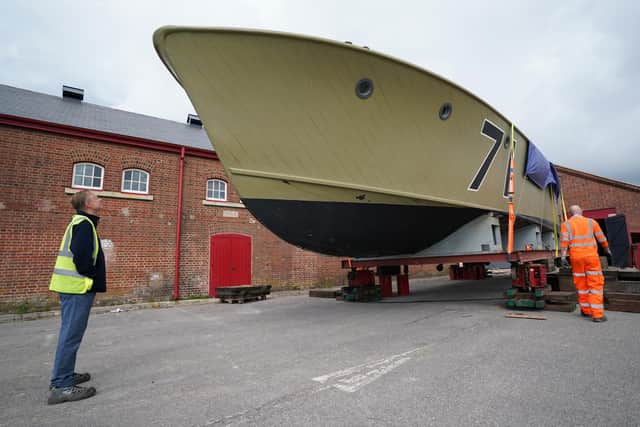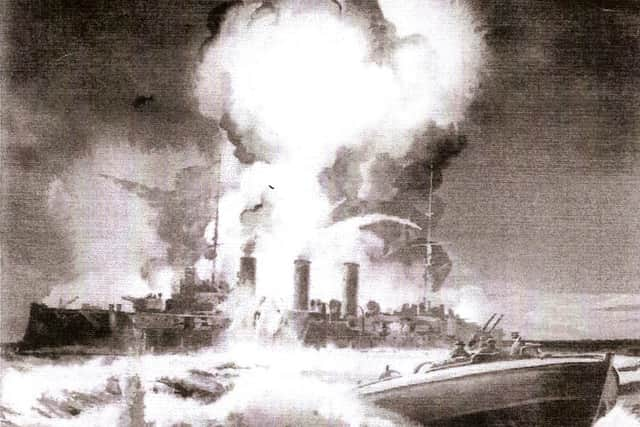Pair of 'Spitfires of the Sea' arrive to be centrepiece of Royal Navy display in Gosport
and live on Freeview channel 276
The boats, coastal motor boat CMB331 and motor torpedo boat MTB71, arrived at the National Museum of the Royal Navy’s (NMRN) Explosion Museum in Gosport, after being brought 100 miles by road from Yeovilton, Somerset, where they have been stored.
The 60ft attack motor craft were deployed during the Second World War armed with torpedoes for close-range attacks.
Advertisement
Hide AdAdvertisement
Hide AdThey will now play starring roles in the new exhibition The Night Hunters: The Royal Navy’s Coastal Forces At War which will open in the autumn to tell the story of the Royal Navy’s coastal forces from inception in August 1916 to their demise in the late 1950s.


Nick Hewitt, head of collections and research said: ‘It’s an incredible opportunity to pay tribute to these boats and the crew who manned them by putting them at the very centre of our exhibition.
‘Our visitors can see them up close and marvel at just how perilous their tactics were, stealthily travelling at high speed, often in the dark, and get a sense of the real risks these young men took.’
A NMRN museum spokeswoman said: ‘Immortalised as ‘Spitfires of the seas’ the boats, coastal motor boat CMB331 and motor torpedo boat MTB71, were often deployed in the dark, at incredibly high speeds as small but fast attack motor boats which carried torpedoes.
Advertisement
Hide AdAdvertisement
Hide Ad

‘It was a branch of the Royal Navy commonly manned by very young men, often reservist volunteers, in wooden craft, heavily armed carrying ammunition, explosives and high-octane fuel as they went in to attack enemy naval forces at close range.’
During the Second World War, the coastal forces took part in 900 actions resulting in 400 enemy vessels sunk.
Combined, they fired more torpedoes than the submarine service, with a greater proportion of hits.
They were also scrambled to land and retrieve spies on enemy coastlines
Advertisement
Hide AdAdvertisement
Hide AdBut often the vessels would take a heavy toll on missions, often nicknamed ‘suicide runs’.
One such assault was the coastal forces most famous – and deadly.
In the early hours of March 28, 1943, 15 small, wooden boats accompanied an explosive laden ship to raid the most heavily defended dock in Nazi occupied France – St Nazaire.
While the raid succeeded in crippling the dock, only three of the coastal forces vessels returned and 284 servicemen were killed or captured.
A message from the Editor, Mark Waldron
You can subscribe here for unlimited access to our online coverage, including Pompey, with 70 per cent fewer adverts for less than 20p a day.
Comment Guidelines
National World encourages reader discussion on our stories. User feedback, insights and back-and-forth exchanges add a rich layer of context to reporting. Please review our Community Guidelines before commenting.
